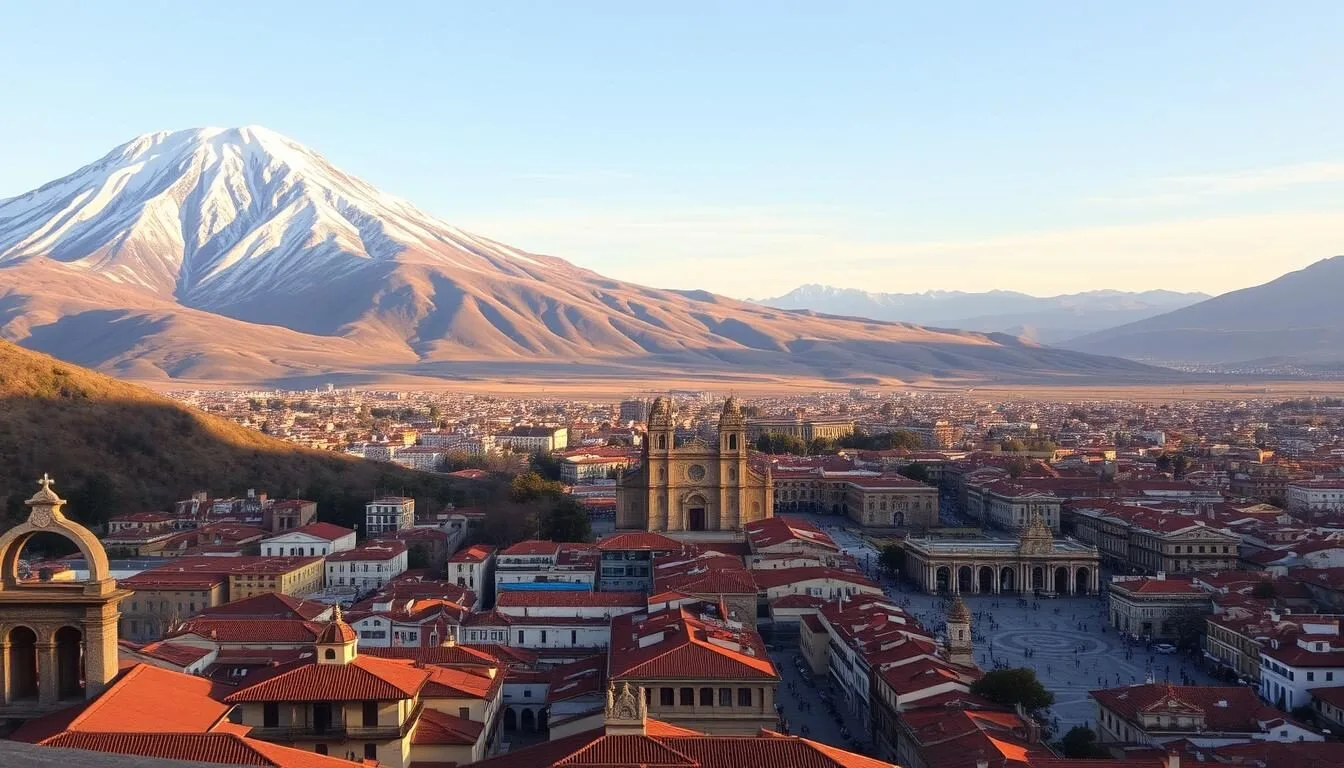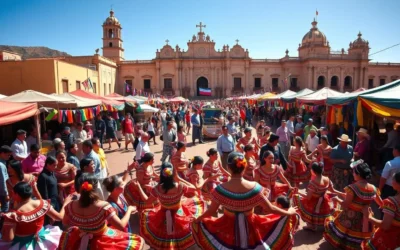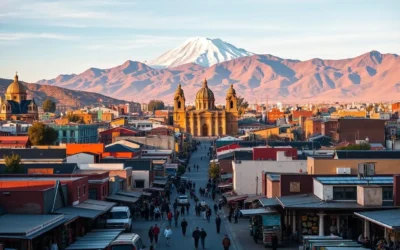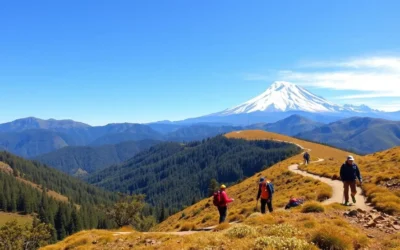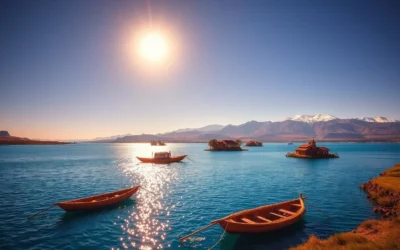✓ Accommodations ✓ Flights ✓ Rental Cars
You are about to explore one of the most unique destinations on the planet – Potosí, a city that stands at an astonishing 4,090 meters above sea level.
This former silver mining powerhouse once funded the Spanish Empire, leaving behind a rich cultural heritage and colonial architecture that has earned it a UNESCO World Heritage status.
As you travel through this Bolivian city, you can expect to be immersed in a blend of indigenous and colonial influences, with numerous historical sites to explore.
Our comprehensive guide will walk you through the top attractions and activities, helping you make the most of your time in this incredible city.
With its unique history, cultural significance, and breathtaking landscapes, Potosí is a must-visit destination that deserves a spot on your travel itinerary.
Discovering the World’s Highest City
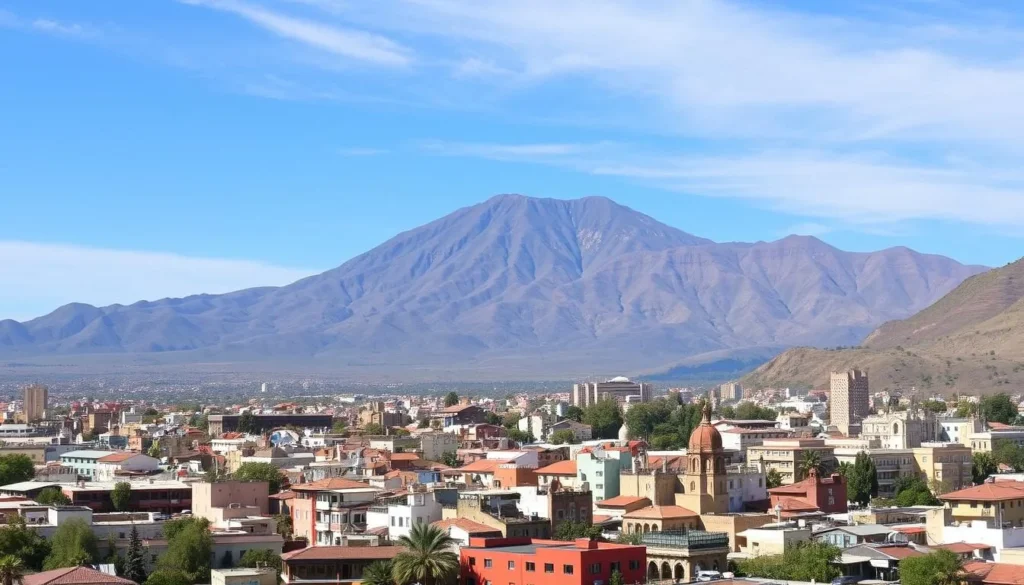
Nestled in the Andes, Potosí stands out as the world’s highest city, boasting an altitude of 4,090 meters. This unique geography not only shapes the city’s landscape but also influences the daily lives of its inhabitants.
Potosí’s Unique Geography and Setting
Potosí’s claim to fame as the world’s highest city is just the beginning. The city is surrounded by breathtaking mountain scenery, with the iconic Cerro Rico mountain dominating the skyline. The colonial center and sprawling outskirts climbing up the hillsides create a stunning visual contrast.
The extreme altitude affects daily life in Potosí, creating a unique living environment. Visitors often need time to acclimate to the thin air, while locals have adapted to the high elevation. The Altiplano region’s stark beauty, with cold nights and intense sunlight during the day, adds to the city’s distinct character.
Potosí’s history is deeply tied to its silver mines, which made it one of the wealthiest cities in the world during colonial times. Today, the city offers panoramic views from various vantage points, showcasing its dramatic landscapes and rich history.
Preparing for the Altitude in Potosí
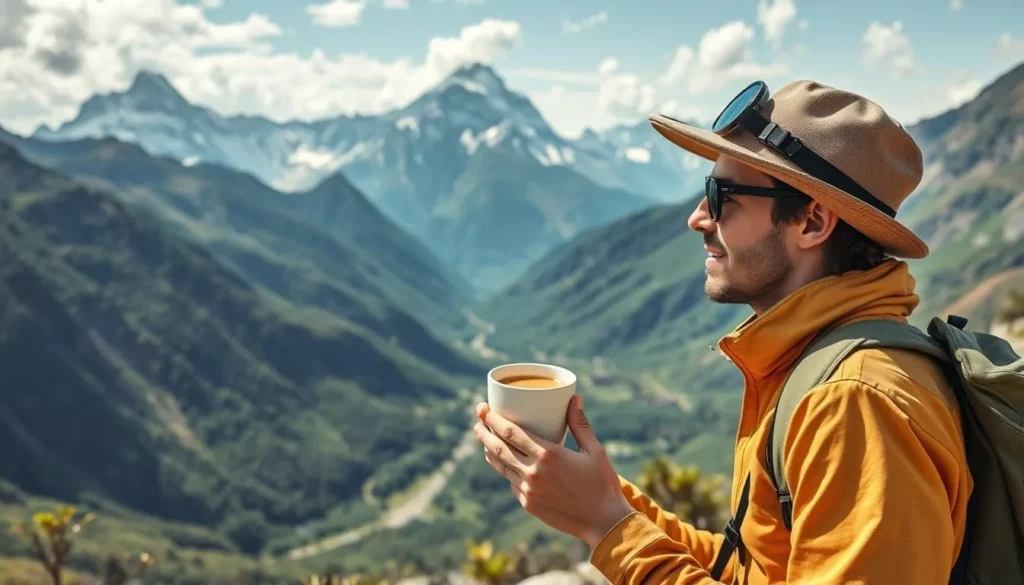
At over 4,000 meters above sea level, Potosí demands respect; preparing your body for the altitude is essential. Many travelers face challenges when visiting high-altitude destinations, and Potosí is no exception.
Essential Health Tips for High Altitude
To make sure you have a pleasant experience in Potosí, it’s crucial to follow some tips and advice on acclimatization. First, it’s recommended to take it slow during your initial day or two, allowing your body to adjust to the high elevation.
Staying hydrated is vital; drink plenty of water and avoid alcohol to minimize the risk of dehydration. Locals often chew coca leaves or drink coca tea to help alleviate altitude sickness symptoms, which can include headaches, nausea, and fatigue.
Your experience in Potosí can be greatly enhanced by planning your itinerary carefully, allowing for rest and gradual adjustment to the elevation. It’s also advice to consume appropriate food during your first few days; opt for light, easily digestible meals.
It’s essential to be aware of the symptoms of altitude sickness and to seek medical advice if they become severe. Certain medications can help prevent or treat altitude sickness, but it’s crucial to consult with a doctor before taking any medication.
By following these guidelines and taking the necessary precautions, you can ensure a more enjoyable experience in Potosí. Remember, proper preparation is key to making the most of your visit to this historic city.
Explore Cerro Rico: The Mountain of Silver
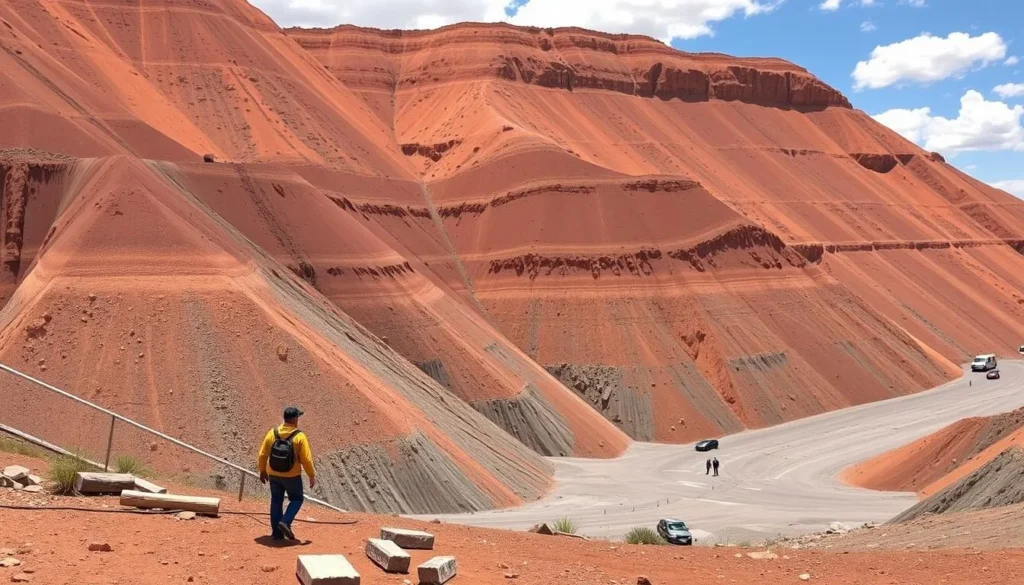
Your journey in Potosí begins with a visit to Cerro Rico, a mountain that played a pivotal role in Bolivia’s history as a major source of silver. Cerro Rico, or “Rich Mountain,” is an iconic landmark that dominates the cityscape of Potosí, offering a glimpse into the region’s rich mining heritage.
Understanding the Silver Mountain’s Legacy
Cerro Rico’s historical significance cannot be overstated. It was the primary source of silver for the Spanish Empire, with the mountain being pillaged for centuries. The exploitation of indigenous and African slave laborers is a dark chapter in the mountain’s history, a legacy that still resonates today. The mines of Cerro Rico are still operational, albeit under challenging conditions, continuing a tradition that spans centuries.
Visitors to Cerro Rico can opt for a guided mine tour to learn about the region’s mining heritage and witness the workings of the mines firsthand. These tours provide a unique experience, allowing you to understand the history and current practices of mining in the region. It’s also an opportunity to see the “Tio” figure that miners worship inside the mines for protection, a fascinating aspect of the local culture.
When taking a guided tour, it’s essential to consider the ethical implications and choose operators who ensure that benefits go to the mining communities. Visitors typically bring gifts such as coca leaves and drinks for the miners, a gesture that is appreciated by the local community.
The mining process, both historical and current, has had a significant impact on the environment and the community surrounding Cerro Rico. Centuries of mining have taken a toll on the mountain and its people, making it crucial to support responsible and sustainable tourism practices.
As you explore Cerro Rico, you’ll gain a deeper understanding of the complex history and cultural significance of this iconic landmark. The experience is both enlightening and humbling, offering a glimpse into the lives of the people who have worked the mines for centuries.
Visit Casa Nacional de la Moneda
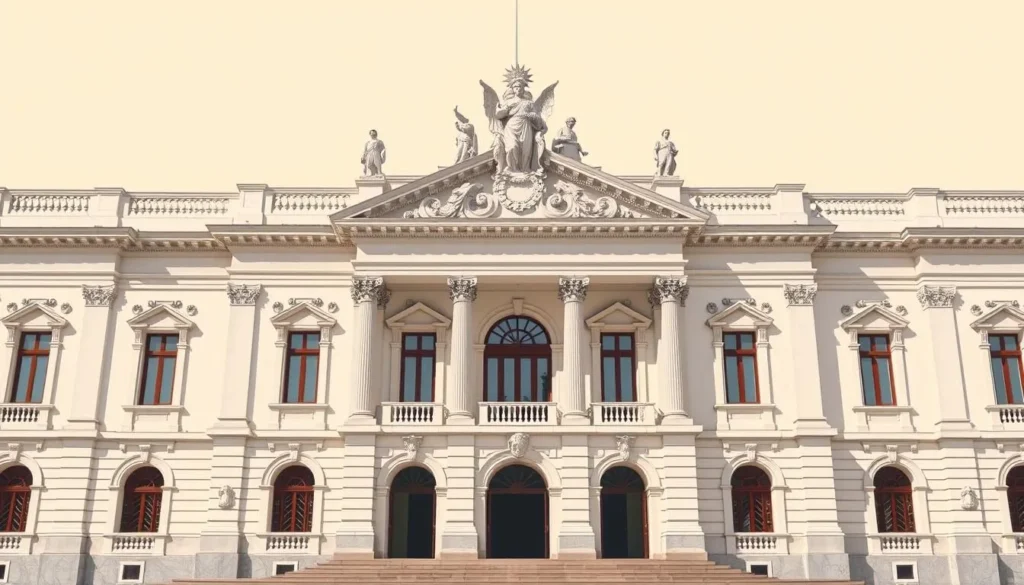
One of the top historical attractions in Potosí is the Casa Nacional de la Moneda, a site that offers a glimpse into the city’s rich colonial past. This historic mint is not only significant for its role in producing coins for the Spanish Empire but also for its stunning colonial architecture.
Exploring the Historic Mint Museum
The Casa Nacional de la Moneda is a sprawling complex that covers an entire city block, showcasing impressive colonial-era architecture. As you tour the museum, you’ll discover an extensive collection of artifacts related to the history of silver production in Potosí.
The museum’s collection includes intricate silver artifacts, original minting machinery, and a collection of colonial art. One of the highlights is the wooden coin-pressing machinery powered by mules, a testament to the ingenuity of the era.
Guided tours are available, providing visitors with a deeper understanding of the site’s historical significance. Tours are conducted at specific times throughout the week, and it’s advisable to check the schedule in advance to plan your visit.
A guide will lead you through the complex, explaining the history behind the various exhibits and the importance of the Casa Nacional de la Moneda in the context of Potosí’s history.
When planning your visit, consider the practical aspects: ticket prices, time required for the tour, and photography policies. This will ensure that you make the most of your time at this essential place in Potosí.
Stroll Through Plaza 10 de Noviembre
Plaza10 de Noviembre stands as the pulsating heart of Potosí, inviting visitors to soak in its colonial charm. This beautiful central square is surrounded by stunning colonial architecture, making it a perfect spot to experience the essence of the city.
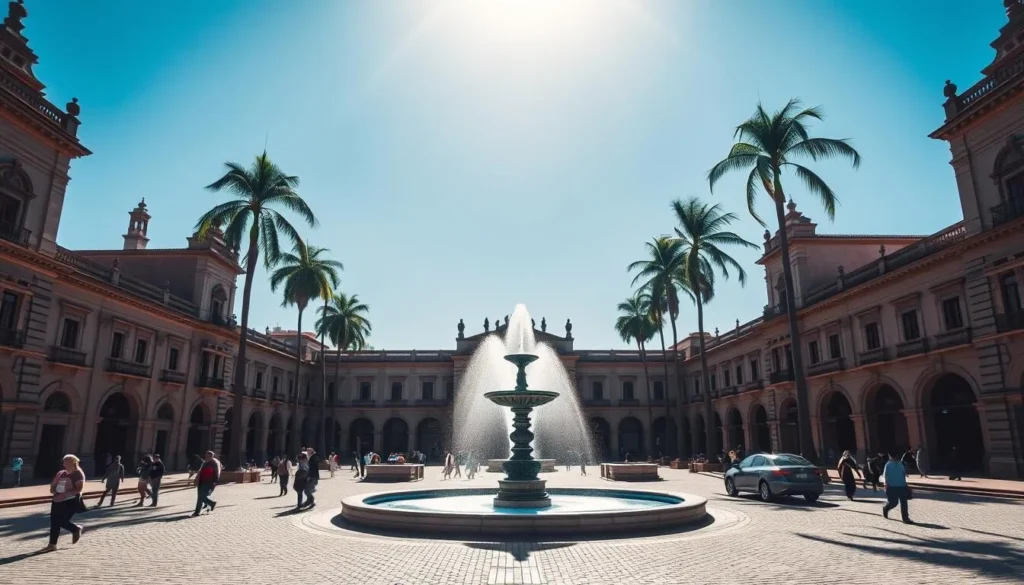
Experiencing the Heart of Colonial Potosí
The plaza is not just a place to admire; it’s a vibrant hub of activity where you can witness the daily life of Potosí’s residents. As you stroll through the square, you’ll be treated to the sight of the impressive Cathedral and other historic buildings that surround the plaza, creating a breathtaking view.
At the center of the plaza stands the Obelisco Potosí, a monument that adds to the square’s historical significance. You can sit on a bench, people-watch, and enjoy the atmosphere that pervades this bustling place. The best time to visit is during the day when the square is filled with activity, or at night when it’s beautifully lit.
For those interested in capturing the perfect shot, the plaza offers numerous opportunities to take stunning pictures of the colonial architecture and the mountain backdrop. Whether you’re looking to enjoy a meal at one of the local cafes or simply take in the sights, Plaza10 de Noviembre is a must-visit destination in this historic city.
Discover Colonial Religious Architecture
As you wander through the historic streets of Potosí, you’ll discover a treasure trove of colonial religious architecture. The city’s rich history is reflected in its magnificent churches and monasteries, which are a testament to the wealth generated by the silver mines. These buildings are not only significant historically but also showcase impressive artistic elements.
Potosí’s Magnificent Churches and Monasteries
Potosí is home to numerous colonial-era religious buildings, each with its unique character and history. The San Francisco Church and Convent, for instance, is the oldest monastery in Bolivia and offers stunning views of the city and Cerro Rico from its rooftop. Visitors can take a guided tour of the church, exploring its altar and catacombs.
Another notable site is the San Lorenzo Church, known for its elaborate Baroque façade, considered one of the finest examples in South America. The Cathedral Basilica of Our Lady of Peace is also noteworthy for its architectural significance, reflecting the city’s historical importance. Additionally, the Church of San Bernardo and Monastery of Santa Teresa house impressive religious art collections.

These religious buildings played a significant role in colonial society, and their grandeur reflects the enormous wealth generated by the silver mines. When visiting these sites, be sure to appreciate the unique architectural features and artistic elements. Guided tours are available for most sites, providing valuable insights into their history and significance.
As you explore these magnificent structures, you’ll be rewarded with breathtaking views, particularly from the rooftops. The panorama of Cerro Rico from the San Francisco Church is a highlight for many visitors. By discovering Potosí’s colonial religious architecture, you’ll gain a deeper understanding of the city’s rich history and cultural heritage.
Experience the Chuquima Market
The vibrant Chuquima Market is a hub of activity where you can immerse yourself in the local culture and commerce of Potosí. Every Sunday, this small mountain village transforms into a bustling marketplace that showcases the rich cultural heritage of the region.
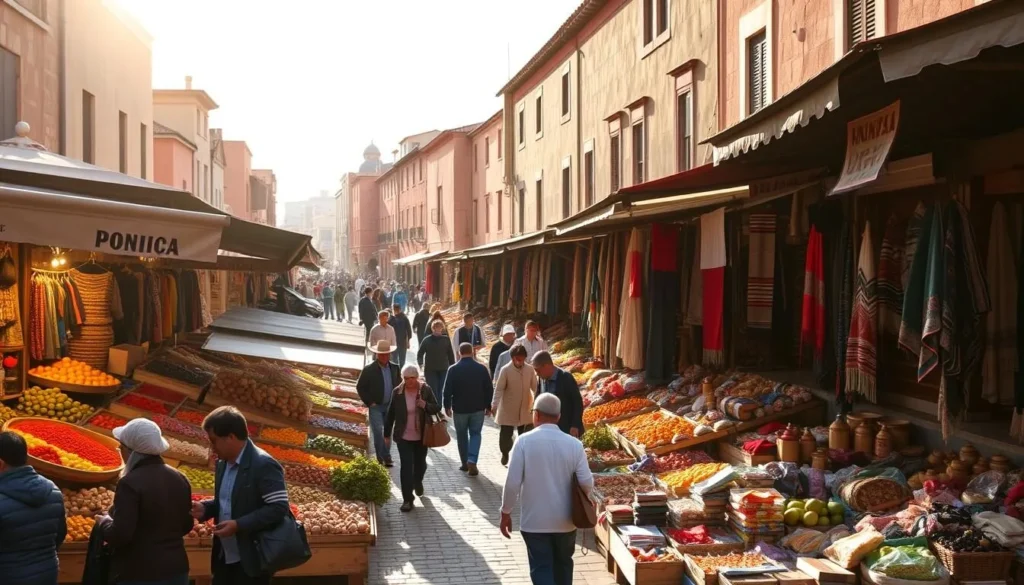
Immersing in the Local Culture
As you step into the market, you’ll be surrounded by the sights, sounds, and smells of local life. The market is a perfect place for people-watching, with locals coming from far and wide to sell their goods, ranging from souvenirs and electronics to weaving, vegetables, fruit, and cattle.
One of the highlights of the Chuquima Market is the traditional clothing worn by the local vendors, especially the indigenous women, who don wide skirts, while men wear black helmet-like headgear with decorations, combined with striped ponchos. You can buy beautiful souvenirs around the central square, but the real reason for a visit is to observe and experience the local life.
When navigating the market, it’s essential to be mindful of etiquette for photography and price negotiations. Be sure to ask for permission before taking photos of the vendors or their goods. Additionally, trying local food and dishes at the market stalls is a must, offering a taste of authentic Bolivian cuisine.
To make the most of your visit, arrive early to experience the fullest market atmosphere. Be prepared to bargain, as prices are often negotiable. By supporting local vendors, you’re contributing to the community’s economic well-being.
Potosí, Bolivia: Best Things to Do for History Buffs
As a history buff, you’ll find Potosí, Bolivia, to be a treasure trove of historical significance and cultural richness. Located at an altitude of 4,090 meters, Potosí is not just a city; it’s an experience that combines history, adventure, and breathtaking landscapes.
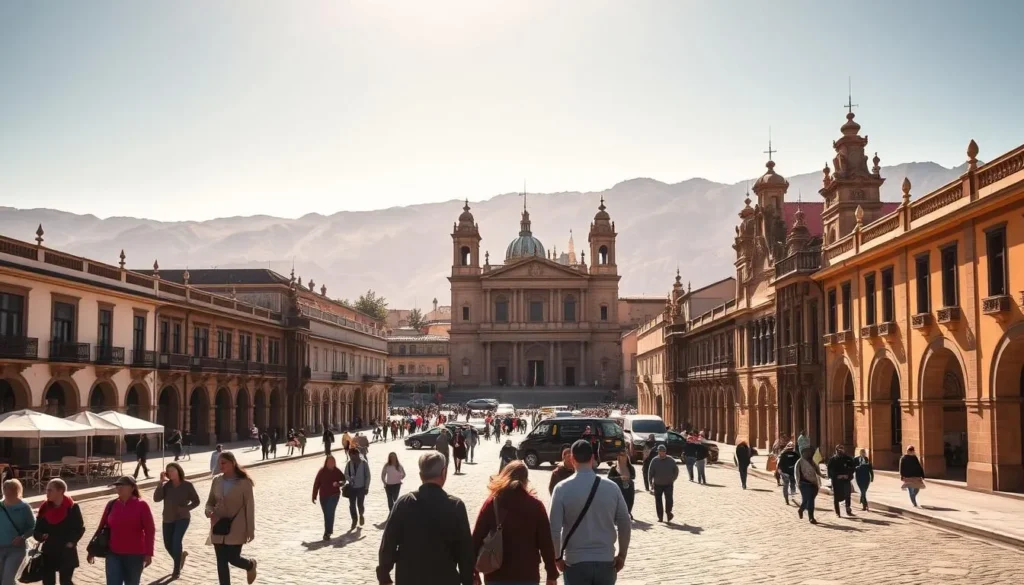
Exploring the City’s Rich Historical Legacy
Potosí’s history is deeply intertwined with its silver mining industry, which made it one of the wealthiest cities in the world during the colonial era. The city’s historic center, a UNESCO World Heritage site, is a testament to its rich past. Here, you can explore colonial architecture, visit historic sites, and take a guided tour to uncover the secrets of Potosí’s silver mining legacy.
Some of the top things to do in Potosí include:
- Visiting the Casa Nacional de la Moneda, a historic mint that showcases the city’s role in the global economy during the colonial period.
- Exploring the Cerro Rico mine, a site that symbolizes both the wealth and the hardships faced by the people of Potosí.
- Taking a stroll through Plaza 10 de Noviembre, the heart of the city’s colonial center.
- Discovering lesser-known historical sites, including colonial mansions and administrative buildings.
For a deeper dive into Potosí’s history, consider a historical tour that covers the city’s colonial past. These tours can range from a day to several days, offering a comprehensive look at the city’s significant places to visit. Additionally, visiting historical museums beyond Casa de la Moneda can provide further insights into Potosí’s past.
Understanding the impact of silver mining on global history is crucial to appreciating Potosí’s significance. The silver extracted from Potosí funded European economies for years, playing a pivotal role in shaping South America’s history and cultural identity.
To enhance your visit, consider reading books or watching documentaries about Potosí’s history before you go. This will not only enrich your understanding of the city’s past but also provide a more meaningful guide to the things you experience during your tour.
Best Viewpoints in Potosí
Visitors to Potosí can enjoy spectacular views of the city and its surroundings from several key viewpoints. The city’s unique geography, with the imposing Cerro Rico mountain at its center, provides numerous opportunities to capture stunning pictures.
Capturing the Dramatic Landscapes
One of the premier viewpoints is the rooftop of San Francisco Church, offering panoramic views of the city and the surrounding mountains. Another highlight is the La Merced church museum’s rooftop cafe, where you can sip coffee while taking in the incredible view.
![]()
For a different perspective, consider visiting the viewpoints on the slopes of Cerro Rico, which offer a bird’s-eye view of the city. The best times for photography are early morning and sunset, when the lighting is most dramatic. Guided tours often include stops at these viewpoints, providing a comprehensive experience of Potosí’s dramatic landscapes.
Tips for Photography: To capture the best pictures, be sure to bring a camera with a good zoom lens, and consider visiting the viewpoints during the golden hour for the most stunning effects.
Where to Stay in Potosí
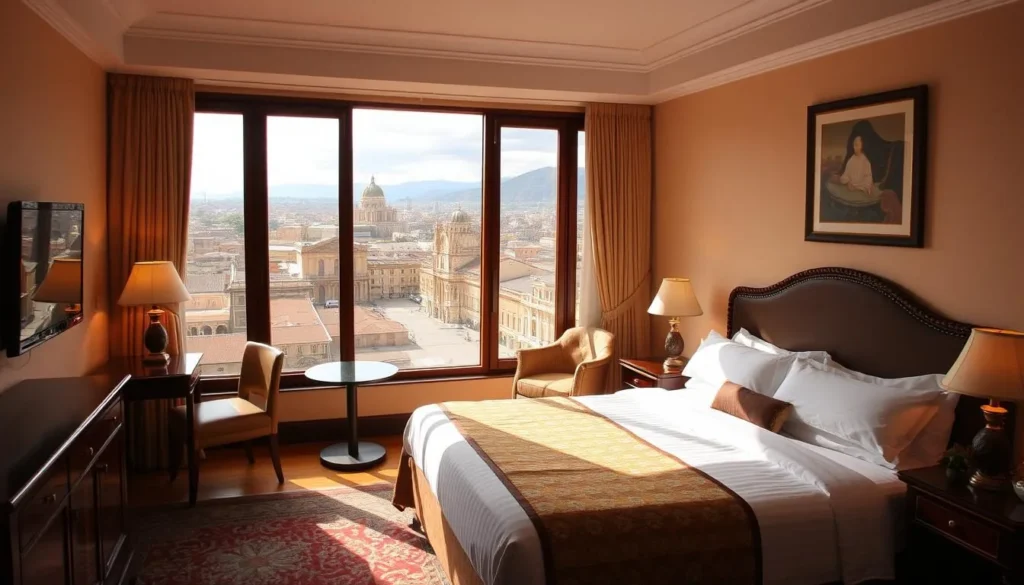
When planning your trip to Potosí, Bolivia, choosing the right place to stay is crucial for a comfortable and enjoyable experience. The city offers a wide range of accommodation options, from luxury hotels to budget-friendly hostels, ensuring there’s something for every traveler’s preferences and budget.
Accommodations for Every Budget
Potosí’s diverse areas provide various accommodation options. For those seeking luxury, Hotel Museo Cayara, located in a historic hacienda, offers a unique and comfortable stay. For mid-range travelers, Hostal Colonial Potosí is a good value option, providing necessary amenities at reasonable prices.
Budget-conscious travelers can opt for Virreyes Hotel, a hostel that offers basic yet clean and comfortable accommodations at affordable prices.
When booking your stay, consider the location, especially if you plan to explore the city’s main attractions. Staying in the Historic Center or near Plaza 10 de Noviembre can be particularly convenient, as these areas are close to many historical sites and offer a vibrant atmosphere.
It’s also essential to check the amenities offered by your chosen accommodation, particularly heating, as Potosí can be quite cold, especially at night. Prices for accommodations vary based on the type and location, but you can generally expect to pay between $20 to $100 per night for a decent place to stay.
To ensure a smooth and enjoyable trip, booking your accommodation in advance is advisable, especially during peak travel seasons.
Where to Eat in Potosí
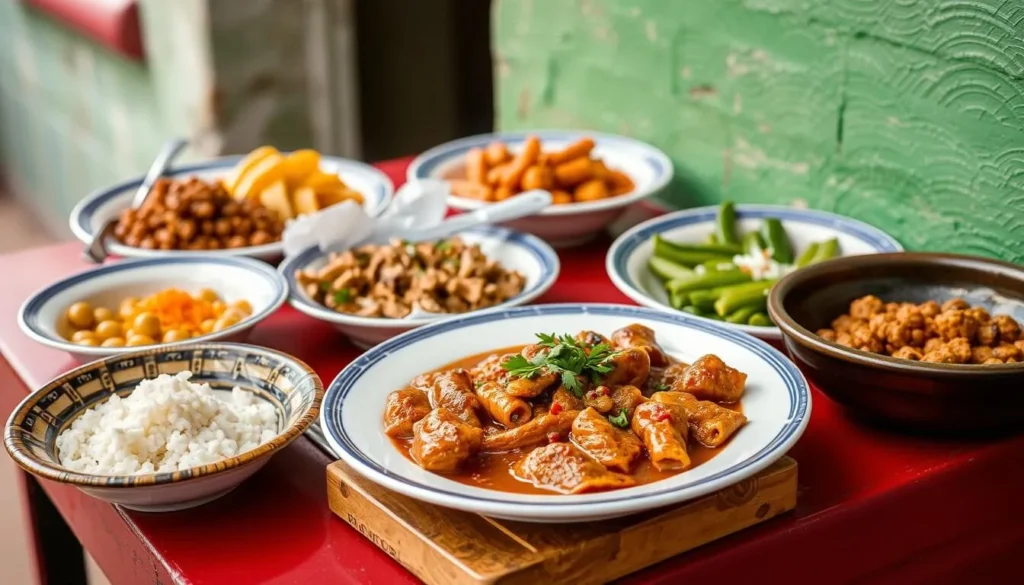
Potosí, a city nestled in the Andes, is a food lover’s paradise, offering a vibrant mix of traditional Bolivian cuisine and local flavors. As you explore this historic city, you’ll find a variety of dining options that cater to different tastes and budgets.
Savoring Local Flavors
The local cuisine in Potosí is characterized by hearty dishes made with meat, often served with a side of potatoes or corn. Some must-try dishes include silpancho, a breaded beef cutlet, and pique a lo macho, a spicy meat dish that’s sure to tantalize your taste buds.
For a truly authentic experience, visit the Chuquima Market, where you can sample traditional Bolivian street food such as salteñas and empanadas. These local favorites are not only delicious but also offer a glimpse into the city’s culinary culture.
When it comes to dining out, Potosí has a range of restaurants to choose from, offering various options to suit different budgets. Cafe de la Plata, located on the main square, is a popular spot for trying local cuisine, while La Casona Verde offers a unique dining experience in a historic setting.
In terms of prices, you can expect to pay between 20-50 Bolivianos (approximately $3-$7 USD) for a meal at a local eatery. For a more upscale dining experience, prices can range from 100-200 Bolivianos ($15-$30 USD) per meal.
Don’t forget to try some of the local drinks, such as api, a traditional corn drink, or sample some of the local beers. For those looking for vegetarian or dietary-restricted options, there are some restaurants that cater to these needs, although choices may be limited.
When dining out, it’s a good idea to be mindful of food safety and opt for dishes that are cooked thoroughly. This is especially important when traveling to high-altitude destinations like Potosí, where your body may need time to adjust.
Day Trips from Potosí
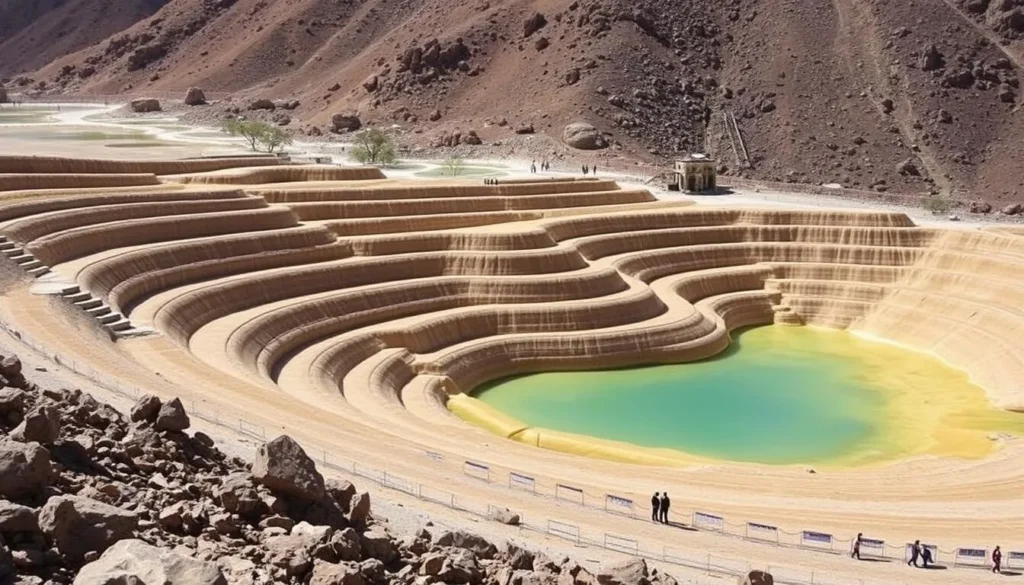
Day trips from Potosí offer a great way to experience the best of Bolivia’s history, culture, and landscapes. The surrounding region is rich in attractions, from historic sites to natural wonders.
Exploring the Surrounding Region
The area around Potosí is dotted with fascinating destinations that are perfect for day trips. You can visit nearby mining towns and historical sites, such as the famous Cerro Rico, or explore the local culture by visiting less-visited indigenous communities that welcome respectful visitors.
One possible day trip is to Tarabuco, known for its vibrant Sunday market, although it’s worth noting that it’s closer to Sucre. The journey to Tarabuco can be a long day trip, but it’s rewarding for those interested in local culture and commerce.
For those interested in natural attractions, the surrounding area offers scenic landscapes and hot springs. You can take a tour that combines multiple sites in one day trip, making the most of your sightseeing time.
When planning your day trip, consider the road conditions and estimated travel times. Public buses, private tours, and taxi hire are available transportation options. Don’t forget to bring essentials like water, sun protection, and warm layers.
To maximize your day trip experience, plan an efficient itinerary that includes the places that interest you most. With a little planning, your day trip from Potosí can be an unforgettable experience.
Getting to and Around Potosí
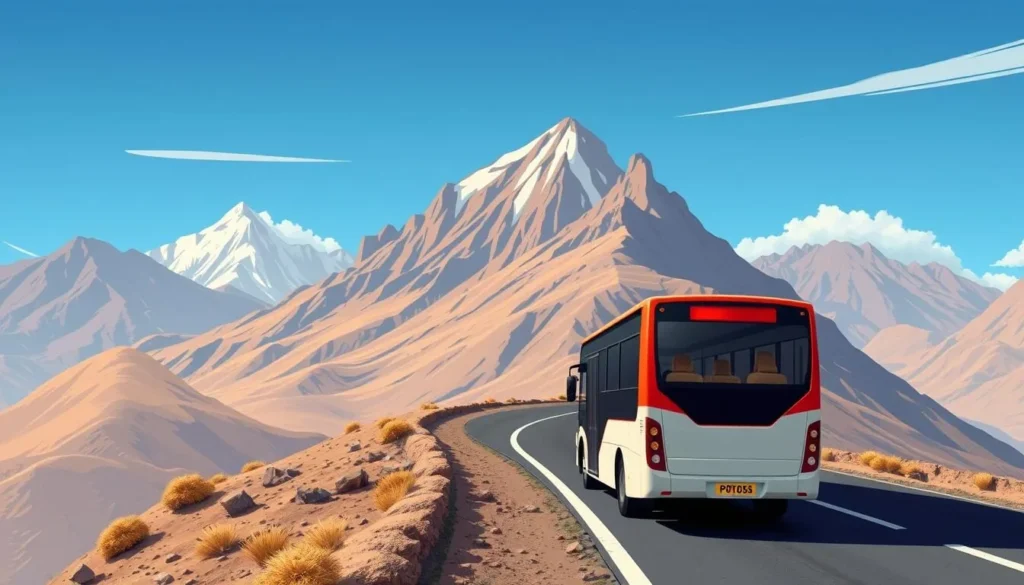
If you’re planning a trip to Potosí, you’ll want to know the best ways to get there and navigate the city once you arrive. Potosí is a city that is steeped in history and culture, and the journey to get there is part of the adventure.
Transportation Options to Potosí
The best way to get to Potosí is by bus, and it’s an experience you won’t forget. You’ll travel alongside locals and witness everyday life in Bolivia. Several bus companies operate routes to Potosí from major cities like La Paz, Sucre, and Uyuni.
When planning your trip, consider the road conditions and scenic routes. The journey can be long, but the views are breathtaking. Bus journey times and prices vary, so it’s essential to book your tickets in advance and research the different companies.
Tips for Booking Bus Tickets
To ensure a smooth trip, book your bus tickets in advance, especially during peak travel seasons. Research bus companies and their schedules to find the best option for your needs and budget.
Getting Around Potosí
Once you arrive in Potosí, getting around the city is relatively straightforward. You can use local transportation options like taxis and minibuses. Be prepared for steep streets and high altitude.
Navigating the City’s Steep Streets
Potosí’s streets can be challenging due to the city’s high altitude and steep terrain. Take your time, and don’t hesitate to ask locals for directions or assistance.
Renting a car is generally not recommended due to the road conditions and altitude. Instead, rely on local transportation or explore the city on foot to take in the sights and sounds.
Best Time to Visit Potosí
The best time to visit Potosí is a crucial piece of information for making the most of your South America travel experience. Potosí, being one of the highest cities in the world, has a unique climate that can significantly impact your trip.
Seasonal Considerations for Your Trip
Potosí experiences a dry season from May to September, making these months generally the best time to visit for clear skies and better road conditions. During this period, you can enjoy sunny days ideal for sightseeing and exploring the city’s historical sites.
In contrast, the rainy season, which spans from November to March, can affect travel plans and sightseeing due to potential road closures and reduced visibility. However, this period can also offer a unique perspective on the city, with lush landscapes surrounding the historic town.
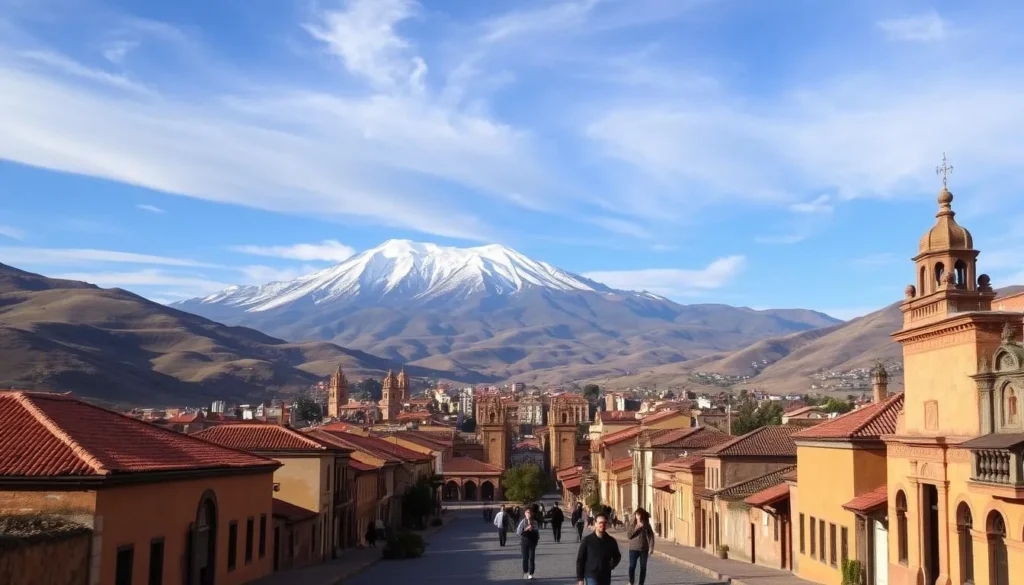
Temperature variations throughout the year are significant, with considerable day-night temperature differences. Make sure to pack accordingly, regardless of when you visit, to be prepared for the high-altitude weather conditions.
When planning your trip, consider the local festivals and events, which can be a great way to experience the culture. However, these events can also attract more tourists, potentially affecting accommodation prices and crowd levels.
Conclusion: Making the Most of Your Visit to Potosí
With its rich history and unique attractions, Potosí is a destination that will leave you with unforgettable experiences. As you conclude your travel guide to this fascinating city, you’ll want to make sure you’ve explored all the essential things to do in Potosí.
To make the most of your trip, consider combining Potosí with other destinations in Bolivia for a comprehensive itinerary. This will not only enhance your travel experience but also give you a broader insight into Bolivia’s past and present. When traveling, it’s essential to be mindful of the local culture and history. Potosí’s historical significance is a reminder of the importance of responsible tourism.
As you plan your trip, remember to prepare for the altitude and be culturally sensitive. Support local businesses and communities during your visit, and don’t forget to pick up souvenirs that commemorate your journey. By doing so, you’ll be contributing to the local economy and taking home a piece of Potosí.
For an unforgettable experience, take guided tours and explore the city’s dramatic landscapes. With these tips, you’ll be well on your way to creating lifelong memories of your visit to Potosí.
The above is subject to change.
Check back often to TRAVEL.COM for the latest travel tips and deals.
